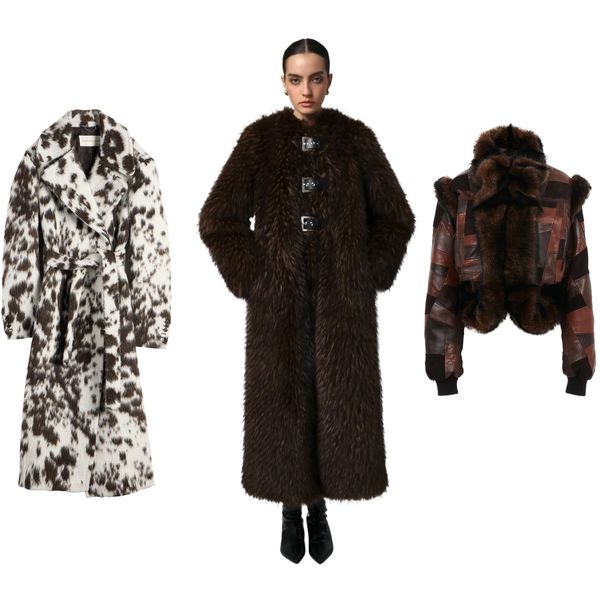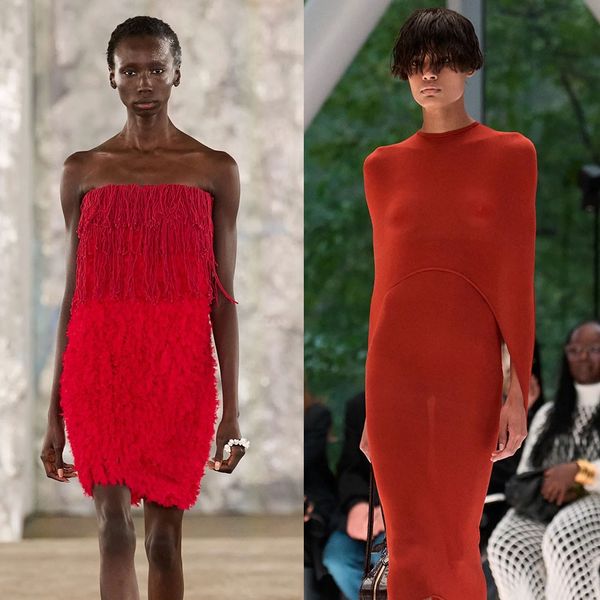I Quit Androgyny And Embraced Femininity. It's Complicated.
For most of my life, I’ve felt like fashion was a decision made for me. But was my newfound style a reflection of my true self, or just another form of armor against the world?
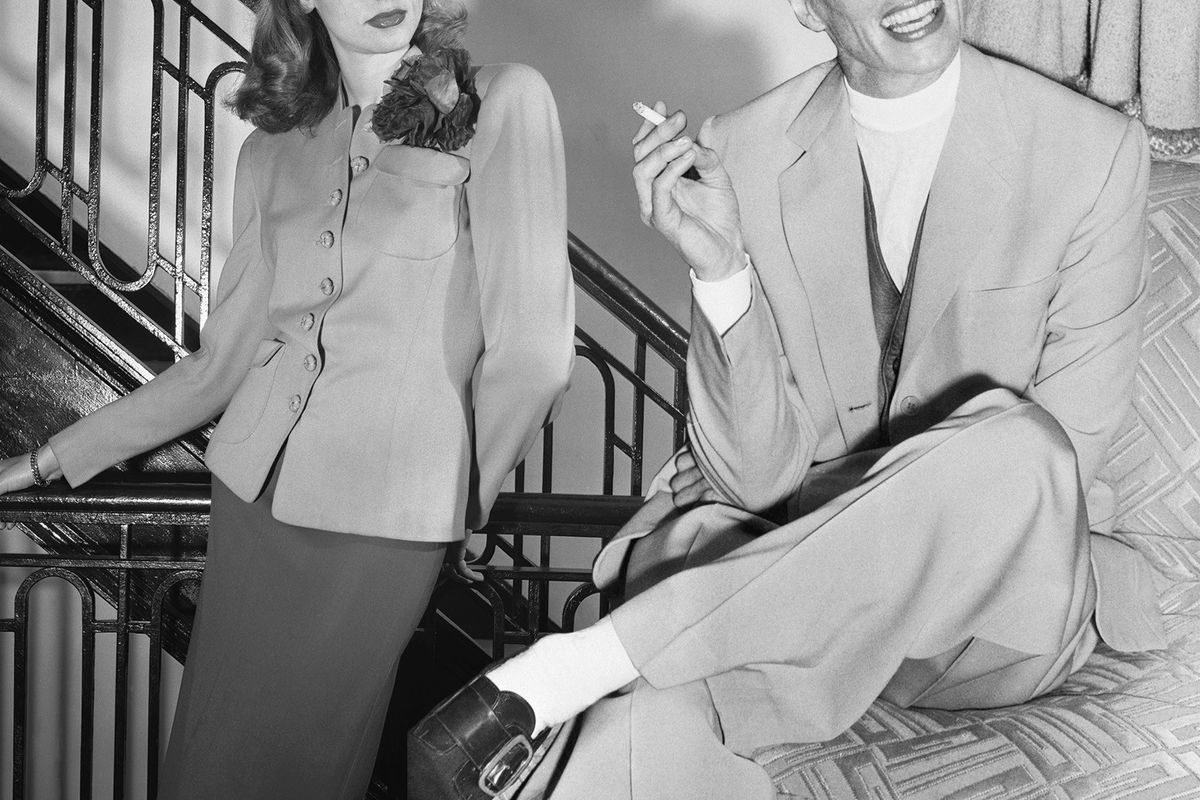
I’ve never kept my gender—and by extension, my style—journey a secret. I first announced to my Instagram followers on May 27, 2021 that I started using she/they pronouns. Very quickly after that, though, I asked others to use they/them pronouns when referring to me, and that’s how it remained for three and a half years. I made my non-binary identity and style part of my job. As a shopping writer, I wrote articles where I tested binders (and their alternatives) and let stylists dress me in androgynous outfits. In my more editorial stories, I wrote about my family misgendering me and about how my journey in fandoms impacted my gender. It was very much my brand, and I don’t regret any of it.
But flash forward to 2025, and my perception of myself, my style, and gender couldn’t be more different. I simply woke up one day recently, and realized I’ve done a total 180—and that change had felt natural. But in the wake of Trump’s aggressive and persistent attacks on trangender rights, I started to question it. Was I becoming more feminine because of the current administration and its supporters' hatred towards trans people and my attempt to blend-in? Or was this the direction I was always meant to move towards? I’d like to believe politics don’t play such a big role in my styling decisions, but that can’t be true, especially not when you’re queer.
My first stop in my existential style quest was Mac Rose, my friend, fellow lesbian, stylist, and owner of PHIKA Styling. Mac told me she got the most clients requesting gender affirming styling services ever on election day. “All of the clients I got on election day were transitioning,” Mac explained. “[They] were going somewhere in terms of the way that they wanted to be seen and perceived in the world, and they wanted to speed that process up.” The clients were mostly transgender women that were interested in a more feminine presentation and wardrobe. None from this specific group, Mac told me, were non-binary or gender non-conforming people. While all trans people are in danger under this administration, trans women (specifically, Black and other WOC) are disproportionately targeted. It makes sense that they’ll arm themselves with everything they can to fight against discrimination and misgendering, and styling is an important tool to have in their arsenal.
Most of my life, I’ve felt like fashion was a decision made for me, either by my parents or our poverty. As a child, I was the girliest girl with every outfit consisting of pink, bows, dresses, and butterflies. I remember I had a pink camo Bobby Jack top-and-pants combo, the most early 2000s outfit a girl could have. But then, puberty hit, and fear became the fuel behind those decisions. When it became painfully obvious that my breasts were bigger than a “normal” 14-year-old’s should be, they had to be covered. When my parents were taking out loans to pay for my private Catholic schooling and their uniforms, every piece of clothing needed to be bought one or two sizes bigger, uno nunca sabe “just in case.” I was the biggest size in my group of friends. As an adult, I understand the economic strategy behind this decision, and I don’t currently care about my size in the slightest—as long as my clothes actually fit, and I’m not drowning in them. Back then, the lesson this burrowed in me was that femininity was dangerous and my body wasn’t allowed to take up space. I didn’t find style creativity between the clearance racks of JC Penny—I found shame.
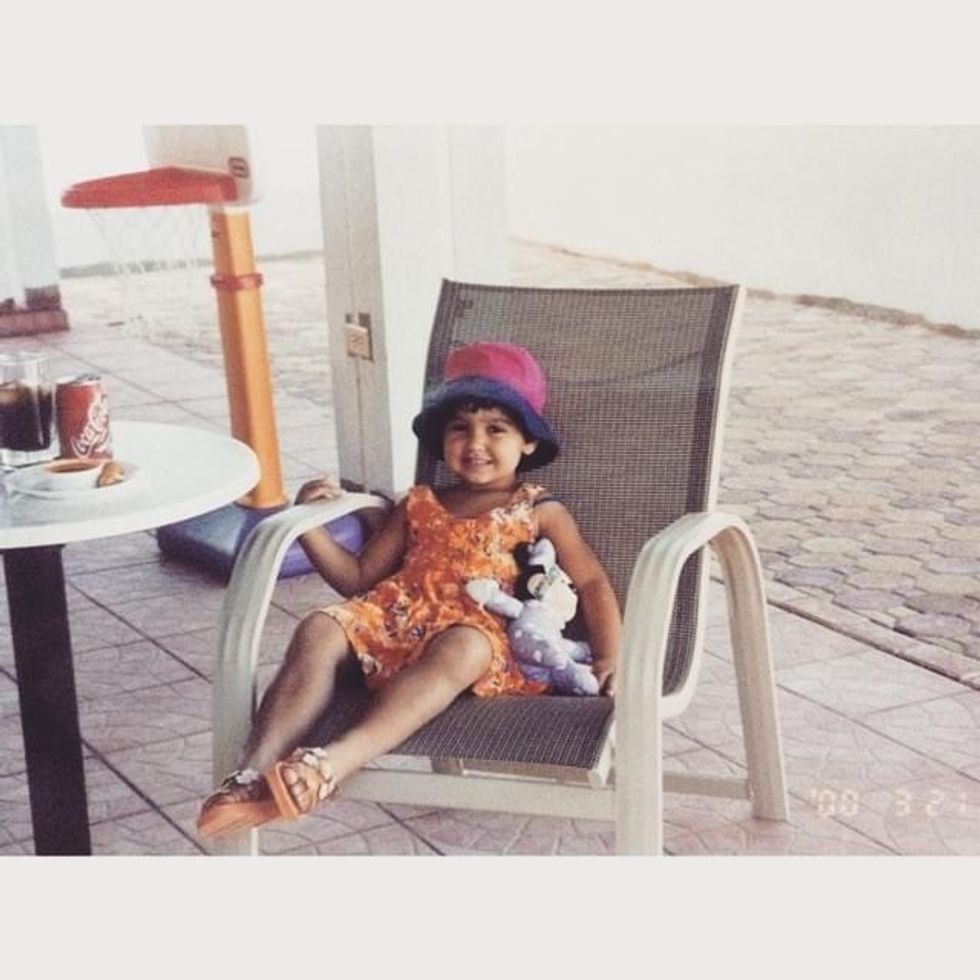
Sofia Viera
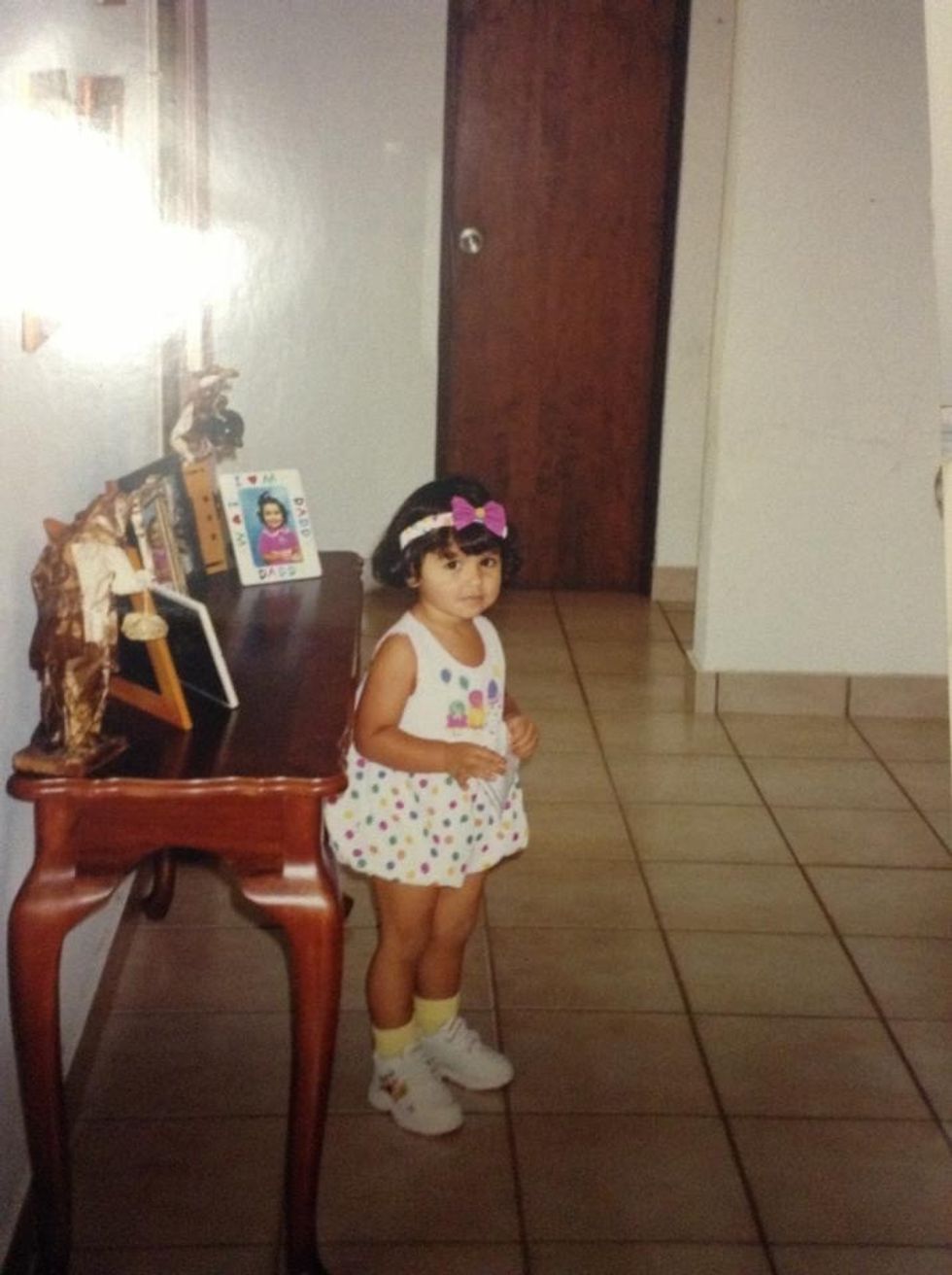
Sofia Viera
Throughout my life, my mission has been to unlearn that—and I have, for the most part.
Not only were clothes important for my gender expression, but so was my hair. I didn’t feel truly androgynous and non-binary until I cut all of my hair off in July 2021. Then, even if my outfits were traditionally feminine, I was presenting androgynous because my hair and energy were.
23-year-old Mia Euceda had a similar story with their hair and gender exploration journey at an earlier age. “I wanted it buzzed, but I was like 12 and my mom wouldn't let me, so, I started out with this little pixie-cut bob,” they say. They wore baggy clothes, shopped in the mens section, and leaned into the boxy silhouette. Now, though, Euceda noticed they’re shopping in the women's section almost exclusively, wearing clothes that accentuate their hips. “I noticed I haven't really been correcting people when they slip up with pronouns, and I still recoil on the inside… but, I don't know,” Euceda told me.
The most masculine of my outfits came from a deep rage of not being able to control how other people perceived me. They also came from fear and anxiety. I didn’t know anyone in the city, and I was living away from my family for the first time ever at 24 years old. And while I had felt confident and safe navigating Midtown in the years before when I visited, something felt different living there. During that first year, I had moments where stepping outside felt terrifying—even though nothing ever really happened to me. Maybe, masculinity was my armor.
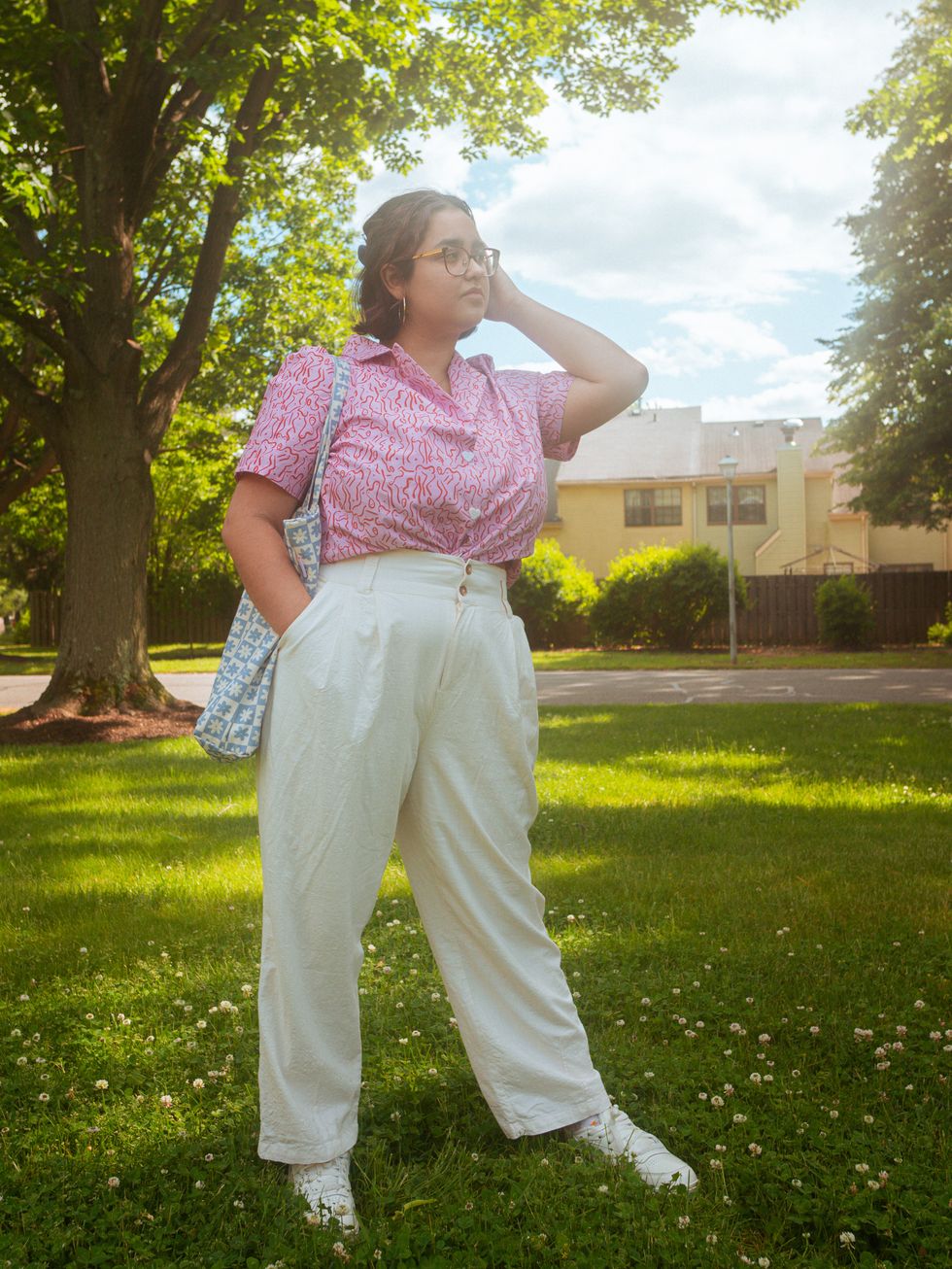
Guillermo Viera
Nas Walton’s experience has been the opposite of mine: they recently came out as non-binary/gender non-confirming. 75 percent of the time they dress and present as androgynous or masc, but also “don't even feel like figuring this shit out.” They described their experience with femininity as drag, “like it's not me. I'm not a feminine person, but I just want to see if I still got it and I can be a bad bitch again.” That description of drag really stuck with me. I realized that my masculine outfits felt like I was doing a Drag King routine.
Both people I spoke with, even with opposite experiences, expressed a need to not have it all figured out. It’s not safe to figure ourselves out in the open, at least not when it comes to gender.
“My logic says the only reason why I'm trying to place myself into a gender box is because we live in a very gender political society, so I need to put myself into a nice little category,” Walton said. “The way that I am, the way that I exist, is beyond any human capacity of understanding.”
“I guess I am non-binary, but I don't know," Euceda says. "I've been on a ‘oh, I'm not about labels, I'm just me’ type [journey]. Maybe that’s a response to what's going on."
I don’t think I’m cis, but I also don’t think I’m non-binary or trans. Maybe femme lesbian is enough of a label? Or maybe just lesbian—whatever it is, it’s definitely feminine. There’s no denying I am incredibly privileged in being able to choose. Many people are choosing to not deal with their gender right now, in order to protect themselves. While others don’t get to make that choice, they live it, instead.
The truth is, in this new feminine era (with sprinkles of androgyny here and there), I am more healed and confident than I’ve ever been. Maybe femininity means something else for you, and that’s okay. But for me, right now, it means growth. In the future, it might mean something entirely different—but there’s enough space within me to allow that, and until then, I'll be waiting for the world to catch up.

